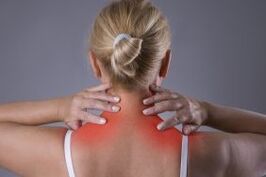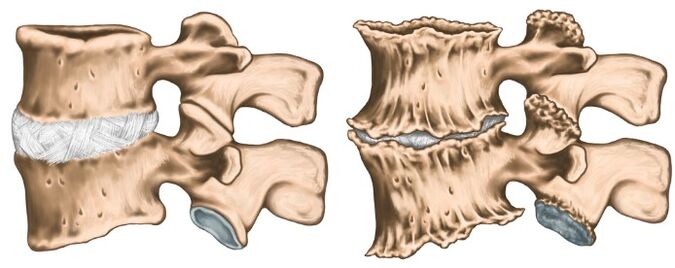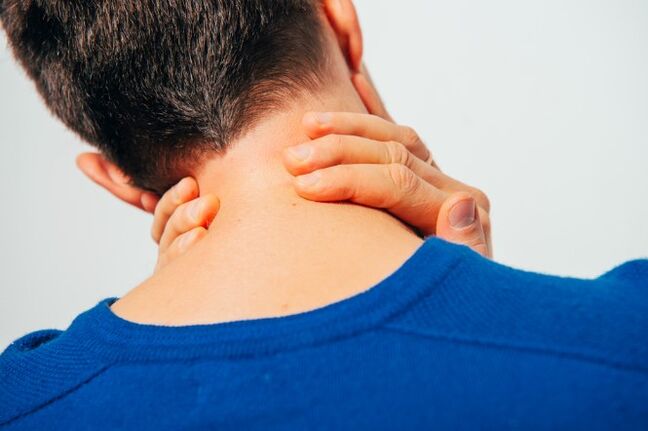With the spine osteochondria, many are not familiar with popular tools from the TV screen, but from their own sad experience.Statistics are tough: up to 80% of the population suffer from this disease, which is also significantly younger.If previous complaints about spine problems were mainly between the older generation, now the children's osteochondria is no longer surprising to anyone.And the error of a sedentary lifestyle and so -called "benefits of culture".

The cervical spine osteochondria is the policy of a progressive illness manifested by the degeneration of the intervertebral discs and the dystrophy of the spine connection.Everyone knows about first -hand symptoms, but this knowledge is fragmented.We will try to structure them, as well as to talk about the principles of diagnosis and treatment of cervical spine.
The causes of osteochondicity
Medical science cannot answer no doubt, so osteochondria is happening.It is well known that the sedentary lifestyle that a modern man is prone to negatively affects the progression of this disease.Interestingly, both athletes and colossal loads of athletes lead to a disklum.A hereditary factor plays a leading role.The following reasons are distinguished:
- Healthy History.
- portliness;
- Possibility?
- Metabolic disorders in the body.
- traumatic injury to the spine.
- Large static overload and work -related lifting weights (computer work, weight lifting, miners, removals, etc.).
- Scoliosis.
- dysfunctional environmental condition.
- flat legs and pregnancy.
- Hypothermia and anxiety, which often cause disease exacerbations.
There are many neurological syndromes:
- Shoulder -Shoulder Perrightritis;
- root;
- cardiac;
- Vail ARTERY syndrome.
The shoulder -Shoulder periaarthritis.It is characterized by pain in the throat, shoulder, shoulder.The top neurogenic tightening of the shoulder joint is formed, which is a protective nature, as it protects the axillary nerve from stretching (excessive posture).With this position, the muscles surrounding the joint are in intensity.The severity of the pain syndrome depends on the degree of deterioration of osteochondrication: on a slight limitation of the range of movements in the joint in SO -called "frozen shoulder" when any movements cause severe pain.The pain is exacerbated when the shoulder is diverted and pronounced, as these movements enhance the trend of the axillary nerve.

Royshift Syndrome (Radical Cervical).Most often it occurs with cervical osteochondria.At the same time, the spinal nerve spine is compressed due to the "sedimentation" of the intervertebral discs, as well as due to the development of osteophies or the protrusion of the discs in the side direction.Pain syndrome is specific: severe burning, tearing, pain pressure, which also exacerbates when the patient moves his head.Antalgic Pose is also noted in the throat muscles, it is strongly tense and painful, the volume of movements is limited.There is pain in the back of the head, neck, front chest, shoulder, between the shoulder blades.The sensitivity disorder by the type of "half a short sleeve" is typical.
Heart syndrome.The name of the syndrome is responsible for himself: the clinical picture is very similar to the angina Pectoris.In this case, there is no organic damage to the heart, at the height of the pain syndrome, no coronary blood flow violations are detected by the ECG and these patients are well tolerated.A typical feature of angina pectoris: the pain takes place after nitrate intake and in the case of osteochondry it does not change and disturb it for a long time.Unlike angina, pain detection is mainly in the heart on the left.With the irritation of the roots of the C8 - T1 segments, rhythm disorders are possible in the form of tachycardia and extraterrestrial.This is not due to damage to the conductive system of the heart, but by violating the sympathetic heart muscle (extracurricular damage).In a differential diagnosis of angina and heart syndrome, the master is the fact that, in addition to heart complaints, the patient notes the increase in joint pain and shoulder pain associated with elevation or hard movements.
Vail ARTERY syndrome.The spine occurs in a channel formed by holes in the transverse vertebrae processes.This artery is paired, responsible for supplying blood to the brain.Consequently, any reduction in this channel very negatively affects the diet of brain tissue.The spine syndrome is directly developed by both the compression of the artery itself and the irritation of the sympathetic nervous mesh around it.Pain in this pathology burns or sprouts in the occipital area by spreading to whiskey, seminars, crows.Arises both on one and both sides.Patients usually associate the deterioration with the condition after sleeping in a non -medical posture, travel travel, walking.With severe symptoms, hearing loss, dizziness, ears noise, nausea, vomiting, loss of consciousness and increasing blood pressure.These symptoms are not specific and are very similar to complaints in the stroke.This pathology is characterized by the syndrome of the chapel of sixtin: a fainting that occurs when you overthrow the head back (severe brain ischemia).It was described by visitors to the Sistine chapel in the Vatican when they examined the frescoes in its arches.It is also possible to fall without loss of consciousness with sharp head turns.
Like any diagnosis in medicine, the diagnosis of osteochondicism is established on the basis of patient complaints, disease anesthetics, clinical examination and auxiliary research methods.X -ray of the cervical spine in immediate and lateral projections are performed if necessary in special positions (with open mouth).At the same time, experts are interested in the height of the intervertebral discs, the presence of osteophies.Modern research methods are used by IAMR and CT Research, which make it possible to verify the diagnosis more accurately.In addition to listed methods of additional research, consultations of relevant experts (cardiologist, ophthalmologist, neurosurgeon) may be needed and the neurologist's examination is simply vital.The neurologist is involved in the treatment of osteochondicism, so after examining the patient, he will prescribe the necessary minimum examination at his discretion.

Treatment of osteochondry
Osteochondria is a multimedical disease, for a course of treatment it is not cured.You can't drink a "magic pill" and everything will go through, it is necessary to fundamentally change your lifestyle, since the trigger is hypotherapy.The tangible results are easier to achieve at the early stage of the disease, when complaints are minimal and there are no compression syndromes and the spine.In the acute stage of the disease, when the following groups of drugs result in severe pain: the pain syndrome is pronounced:
- Therapeutic exclusion of Paravertebral (to relieve pain and removal of muscle spasm).
- Nsaids?
- Ointments containing NSAIDs and reflective action.
- Minds relaxing;
- B Vitamins V.
As the inflammatory procedure recedes and the relief of the pain syndrome, they move to physiotherapy treatment.Most of the time the following techniques are used:
- laser treatment?
- Electrophoresis?
- acupuncture;
- Exercise treatment;
- Therapeutic massage.
- Manual treatment.
It is important to understand that osteochondria is proceeding with periods of exacerbation and recession, so it is very important to affect the cause and not deal with research.

































